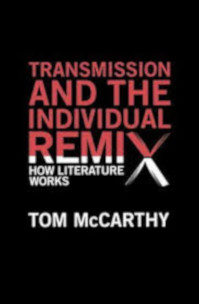Trasmission and the Individual Remix
How Literature Works
Tom McCarthy
An arresting and inspiring invitation to rethink literature itself…
Listen…
A set of signals has been pulsing, repeating, modulating in the airspace of literature…
This essay is an invitation to listen to those signals, as they travel through and shape the work of Aeschylus and Ovid, Rilke, Conrad, Burroughs, Joyce and others. To retune our idea of what a writer does, of what the very act of writing ‘is’. To rethink literature itself along the lines of transmission and reception, signal and noise…
Listen: two times. I repeat…
—
In his novels Remainder, C, and Men in Space, McCarthy explores the theme of signals and transmission. Now, he blows the concept wide open and identifies the signals that have been repeating since the dawn of literature. He takes us back to the Greeks and the origins of literary meaning to show that information, rather than being a natural or abstract phenomenon, is always based in artificial media—in ones and zeros, dots and dashes, signals and noise. He takes us through Ovid, Rilke, Conrad, Joyce, Beckett and others to re-imagine the very idea of what a writer does, and what the act of writing is. Rather than praising individual creative genius, McCarthy re-tunes our ears to the crackle of information as it has passed through the feedback loop of literary culture
First published by Jonathan Cape (Penguin Random House) in 2012.
